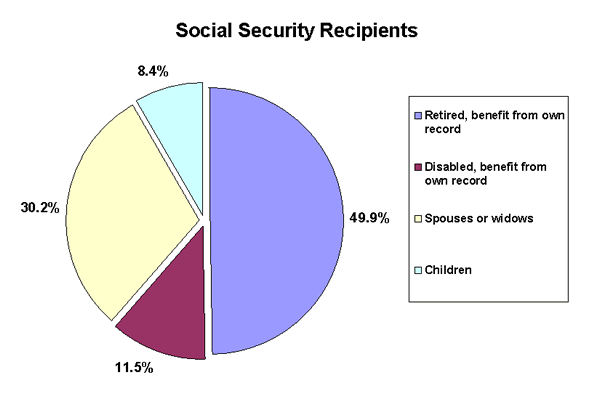See Snapshots Archive.
Snapshot for February 28, 2005
Walkmans to iPods: Social Security is better equipped to provide family income protection
Too often, the debate on Social Security wrongly assumes that the program provides only retirement benefits based on an individual’s lifetime earnings and contributions. In fact, slightly less than half of Social Security’s 47 million beneficiaries are retired workers receiving retirement benefits based on their own earnings. While Social Security provides benefits that allow workers to have some independence in their old age and not outlive their savings, an equally significant piece of the Social Security pie goes to the families of American workers in the event of the worker’s disability or death. This coverage is important, since the average 20-year-old has a three in 10 chance of becoming disabled before retirement and a one in six chance of dying with young children before reaching retirement.
In his State of the Union address, President Bush contributed to the misconception that Social Security only provides retirement benefits: he never discussed the critical benefits going to family members, surviving children, or the disabled. He did, however, compare Social Security to the Thrift Savings Plan that federal workers may opt to participate in. The Thrift Savings Plan gives federal workers a plan that mirrors 401(k) plans in the private sector. And, like 401(k) plans, the Thrift Savings Plan adds to Social Security benefits rather than subtracting from them.
Social Security, however, provides benefits that reach far beyond those of the Thrift Savings Plan or 401(k) plans. Retirement savings options that receive preferential tax treatment—like IRAs, 401(k)s, and Thrift Savings—provide retirement benefits to individual workers. These forms of retirement savings do not include disability, spousal benefits, or coverage for family members. In addition, 401(k) accounts do not keep up with inflation, which eats away at their purchasing power over time, and cannot guarantee that the amount accrued will last until a worker’s death. The Social Security system is better equipped and more comprehensive than any private retirement savings plan—like a well-appointed iPod, compared to a stripped-down Walkman of a 401(k) account.

Looking at the beneficiaries of Social Security also makes it abundantly clear that Social Security provides much more coverage than other retirement savings vehicles. The figure below shows the distribution of Social Security beneficiaries. About half of Social Security beneficiaries are retired workers getting a retirement benefit based on their own earnings. Of the other half, 11.5% are disabled workers and the remaining 38.6%, or 17.8 million recipients, are family members of workers who are getting benefits based on the earnings of a parent or spouse in the family. Family beneficiaries include about 3.8 million children (8.4% of beneficiaries) and 13.5 million spouses or widows (30.2%), including about 6 million who would receive a lower benefit if they relied on their own work history instead their spouse’s primary insurance benefit.1
Social Security benefits provided to these individuals are a vital source of income for families. The added features of protection against inflation, insurance in the case of death or disability, and benefits to families offered by the current Social Security system are a definite upgrade from the pared-down retirement savings plans supported by the Bush Administration.
1. “Spouses of workers” includes divorced spouses either of a deceased or retired worker.
This Snapshot was written by EPI senior fellow William E. Spriggs.
